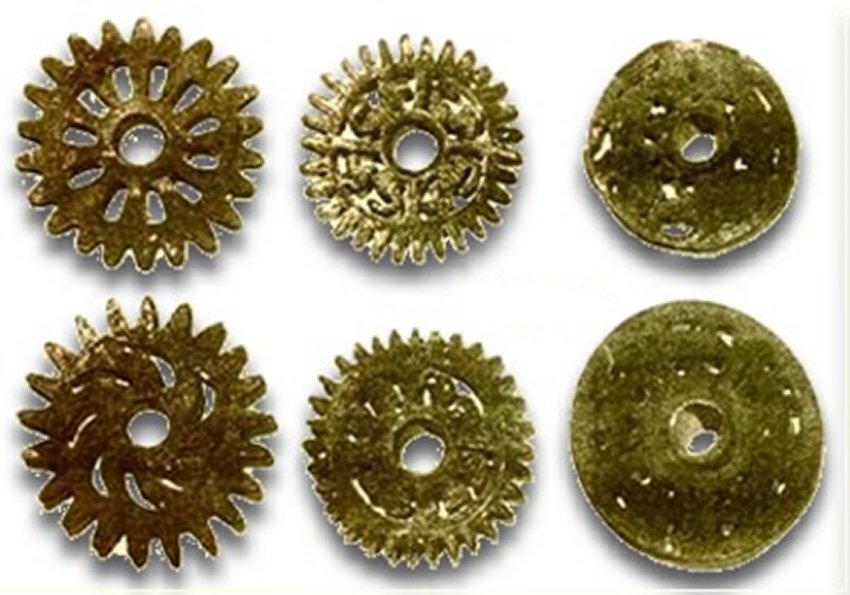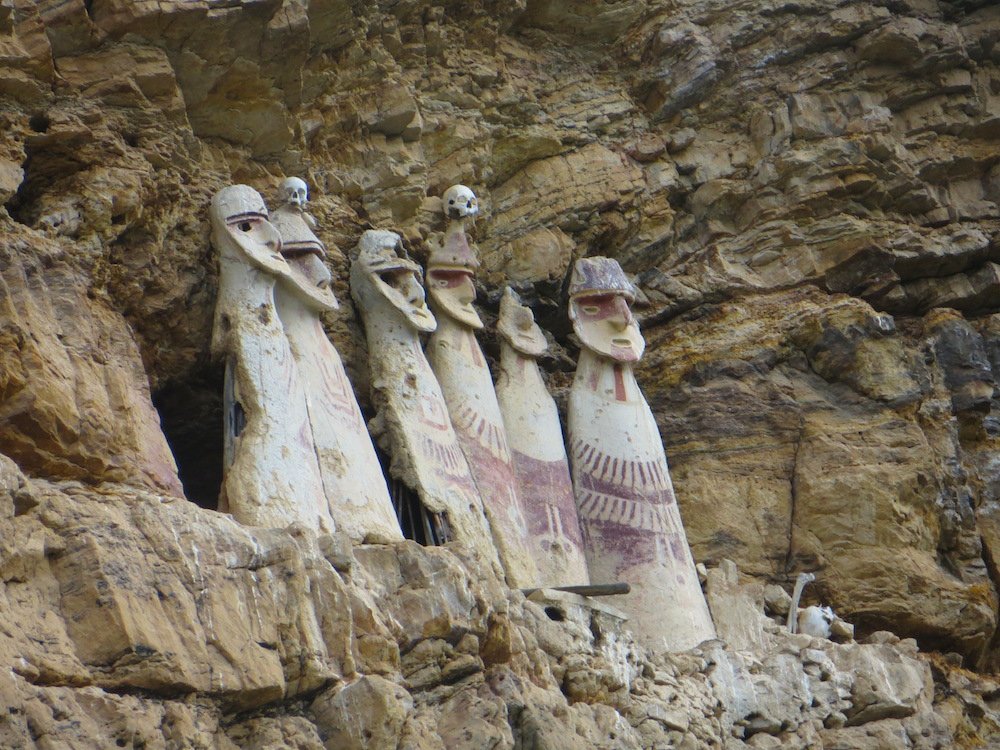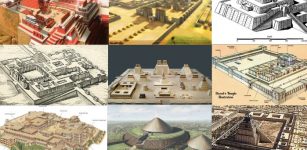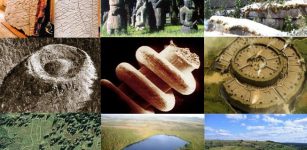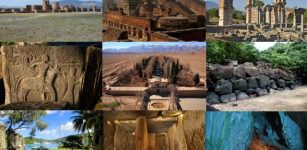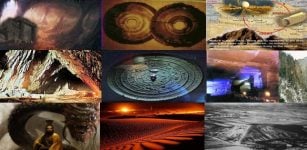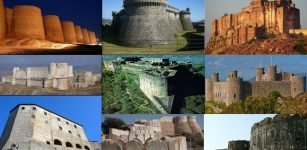10 Great Ancient Mysteries Of Peru
MessageToEagle.com – Peru is a country rich in history that spans several millennia. Known as the heart of the Inca Empire, Peru was also home to many other ancient cultures long before the Incas arrived. There are many beautiful and equally mysterious ancient places in Peru. In this top list, we examine several great ancient mysteries of Peru.
1. Ancient Towers Known As “Chulpas”
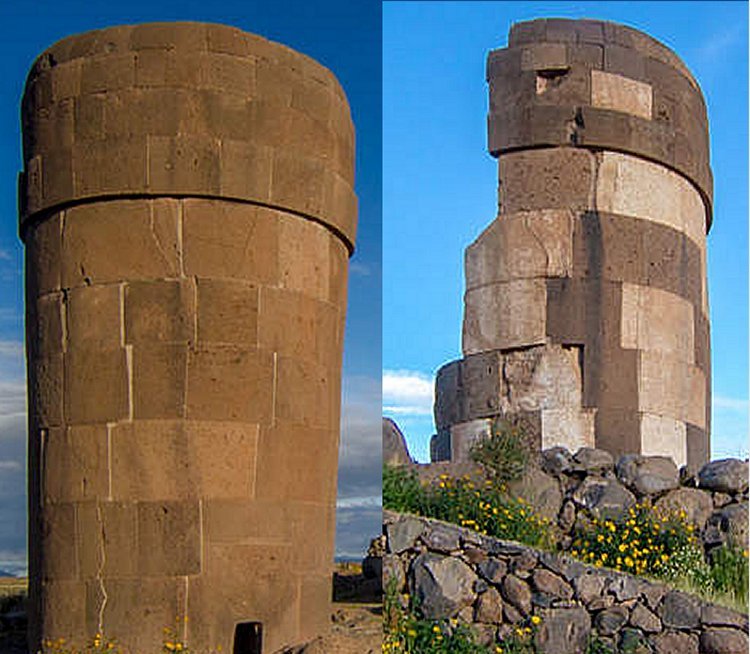
Many archeologists agree that cylindrical towers known as “chulpas”, which can be viewed at Sillustani, Cutimbo, and other places are the work of a pre-Inca culture. The architecture of the Sillustani towers is considered very complex more complex than typical Incan architecture. But why were the towers raised? What were they used for? Now, these are questions we still haven’t been able to answer.
The Chulpas have only two small openings, one at the bottom and one toward the top. These openings are too small to have been used as doors, as only a child could squeeze in through them. At both Cutimbo and Sillustani, pumas and lizards can be seen carved into the perfectly fitted, pillowed blocks of granite: the same symbols can also be seen on certain walls in Cuzco.
One possibility is that the towers were used as grain storage silos with the small doors being ideally suited for protecting the crop, but for now it’s only a hypothesis. Read more
2. Marcahuasi – Mysterious Place Related To Many Legends And Unbelievable Stories
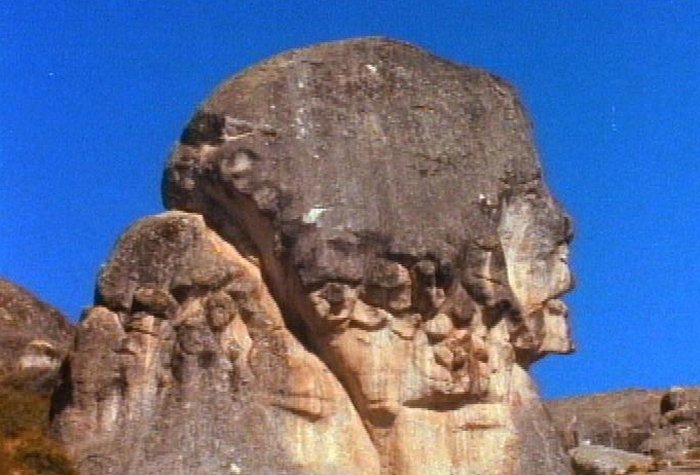
Few places in Peru are as intriguing and mysterious as the Marcahuasi plateau. It is an eerie place related to many legends and unbelievable stories about mysterious subterranean chambers, sightings of balls of light or even encounters with unknown inner-earth beings.
The name is old and predates the Incan Empire. The Marcahuasi Plateau is located near the small village of San Pedro de Casta, about 80 kilometers from Lima, Peru, at an altitude of over 12,000 (12,500) feet above sea level in the Andes Mountains. According to Daniel Ruzo, Peruvian explorer and philosopher, the ancient people who built Markawasi were called the Masma and supposedly, Peru was not their only home. Masma carved Marcahuasi figures using an unknown molding technique before and after the Deluge, which was long before the ancestors of the Incas.
Most peculiar are the legendary and gigantic figures that date back thousands of years. Some of them are about 90 feet tall.
At this site one can find carvings of animals which have never lived in the region and heads of races like Negroes, Semites, Caucasians. There are many sculptures depicting both men and animals like African lions, camels, horses, turtles, penguins, frogs, dogs, monkeys, seals and others. Marcahuasi has even much more in form of several unexplored ancient subterranean caverns and tunnels. Read more
3. Mysterious ‘Temple Of The Crossed Hands’
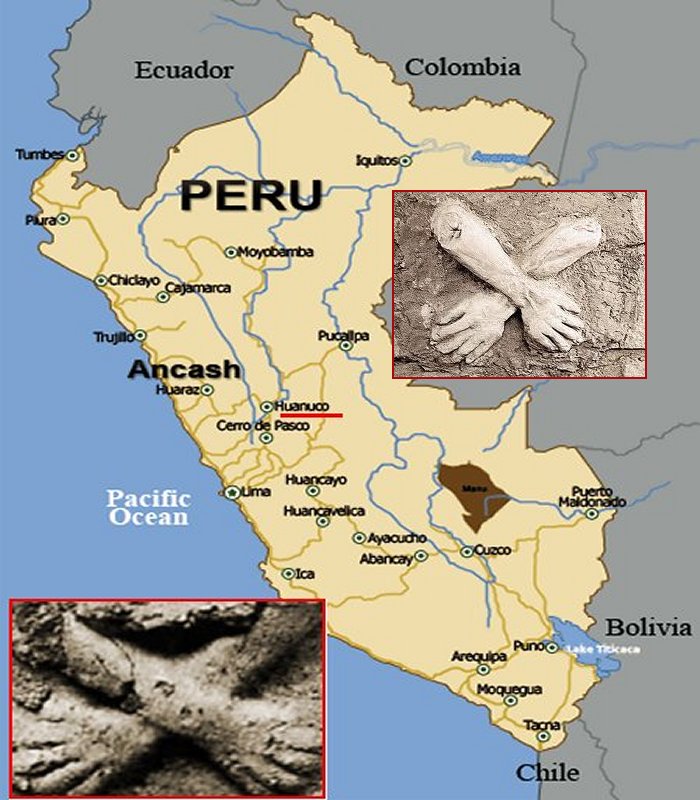
Temple of the Crossed Hands (Templo de Las Manos Cruzadas) in Kotosh, Peru is considered one of the oldest temples in Peru and America and dates back to 4000 years ago.
The first evidence of massive stone constructions from about 2000 BC suggests that complicated building work began here centuries before anywhere else on the American continent.
Today, more than four thousand years old ‘Temple of the Crossed Hands’ lies in ruins and is poorly maintained. The most unique feature of the Kotosh complex is the crossed-hands symbol carved prominently in stone on the temple walls and related to a very early culture about which very little is known. The crossed arm design is believed to be the earliest example of “duality,” a central theme which was represented in Andean Ideology through the time of the Incas. Read more
4. Prehistoric Bronze Gears Of Peru
Not much is known about the mysterious bronze gears discovered in Peru, which are also known as the bronze wheels.
They were described in the book entitled ‘Peru’ written by Professor Rafael Larco Hoyle (1901-1966), owner of the Larco Pre-Columbian Museum in Peru and the writer of numerous archaeological books. Archeologists say these are ritual objects of some kind, but some think they really resemble modern gears. The objects are a mystery. Read more
5. Enigma Of Ancient Upside Down Stairs At Sacsayhuamán
There are many amazing stone structures at Sacsayhuamán, a walled complex on the northern outskirts of the city of Cusco, Peru. This entire ancient site is remarkable in a number of ways.
One particular huge stone structure worth more attention is a huge extremely hard granite rock that has stairs running upside-down.
How can we explain such a construction? Is it possible that a huge catastrophe happened here many thousands of years ago?
Although a majority of the rocks at Sacsayhuamán were manipulated, polished, carved and cut, many of them seem destroyed and the place appears chaotic.
The rock looks old and weathered in some places, but in sheltered parts the cut rock is polished and smooth like concrete. This mysterious ancient rock remind of upside-down stairs. Do these stairs run upside-down because a blast occurred here? Was it an earthquake or some other catastrophe or was the rock turned upside down by an unknown force? Read more
6. The Mysterious Stone Face Of The Amarakarei
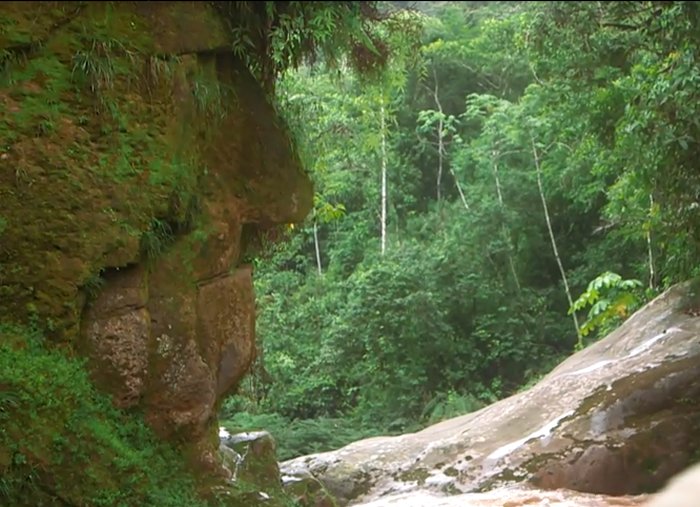
Hidden deep in the Peruvian Amazon is a remarkable enormous face carved into stone cliffs. The “Face Of The Amarakarei“ has been there for as long anyone can remember, but it’s difficult to locate and access. The ancient face is very important to the natives and considered sacred. Read more
7. Mystery Of Sacsayhuamán – Could Ancient Peruvians Soften Stone?
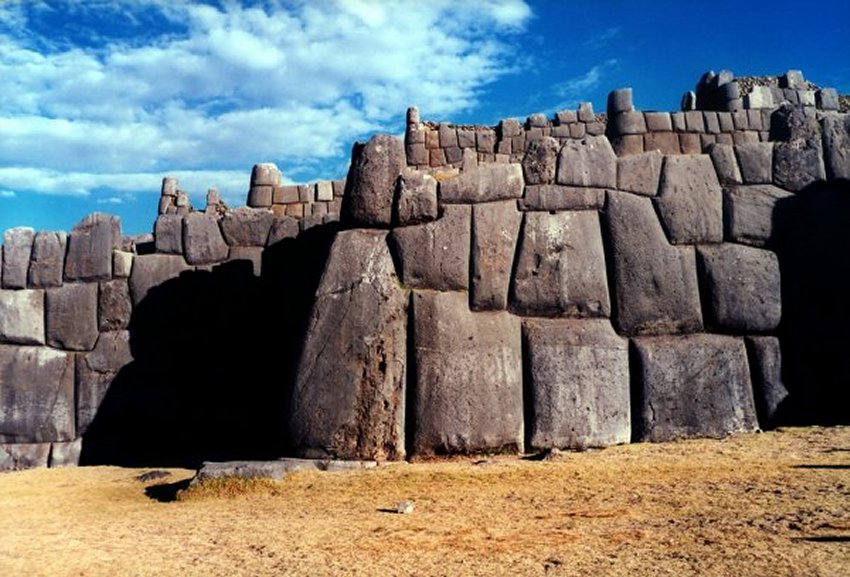
Archaeologists and other scientists have been scratching their heads trying to figure out how remarkable ancient Peruvian structures like Sacsayhuamán were constructed.
This marvelous structure consists of gigantic stones so heavy that our modern machinery can hardly move and put in place.
Does the key to the puzzle lie in a certain very specific plant that gave the ancient Peruvians possibility to soften stone or is the answer to the mystery access to advanced ancient technology that could melt stone?
According to researchers Jan Peter de Jong , Christopher Jordan Jesus Gamarra, the granite walls in Cuzco show evidence of being heated to a very high degree and vitrified- the outside surface becoming glassy and very smooth.
Based on this observation, Jong, Jordan and Gamarra draw the conclusion that “some sort of high tech device was used to melt stone blocks which were then placed and allowed to cool next to hard, jigsaw-polygonal blocks that were already in place.
Researchers Jong and Jordan propose that several ancient civilizations world-wide were familiar with the high-tech melting of stone technology. They also say that “the stones on some of the ancient streets in Cuzco have been vitrified by some high temperature to give them their characteristic glassy texture. Read more
8. Controversial Pokotia Inscription
On the site of Pokotia that is located about 2 km from the city of stone Tiahuanaco there is a monolith that was discovered around 1960. The Pokotia monolith is not very high. It measures only 170 cm, but it is intriguing nevertheless.
In 2002, several researchers who analyzed the monolith and discovered the stone had inscriptions on the front and on the back.
It has been suggested that the monolith Pokotia may have been carved in a period prior to the flourishing of civilization Pukara.According to the official linguistic term Pukara comes from Quechua and means fortress, or strategic place from where you can control a valley or the confluence of two rivers.
The place where the Pokotia monolith was discovered has been identified by some researchers as a sacred site or an oracle.
American epigraphist Clyde Winters who deciphered the inscription on the Pokotia monolith concluded the writing is of proto-Sumerian origin.
According to Winters, the monolith of Pokotia has various inscriptions (proto-Sumerian origin), but the most important ones are below the hands (which are resting on thighs), and in the dorsal part (in the back of the statue).
The signs used to write the messages on the Pokotia monolith were non-liguture Proto-Sumerian symbols. Read more
See also:
10 Great Ancient Mysteries Of North America
9. Has A 30,000-Year-Old Hidden Writing Been Discovered At The Fabulous Sacsayhuamán Temple?
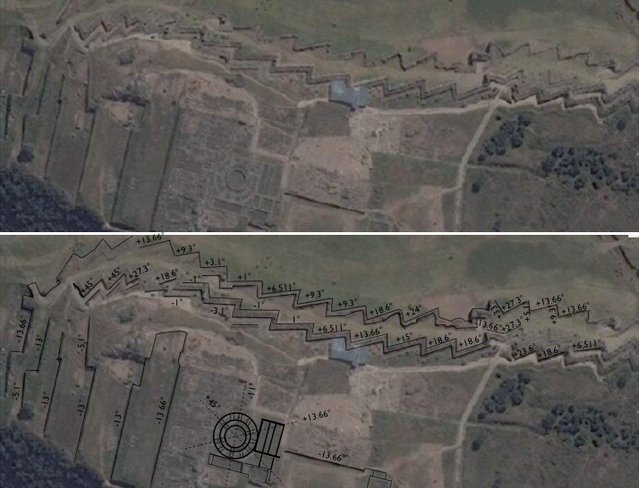
A highly thought-provoking theory has been put forward by a researcher who is suggesting that the fabulous Sacsayhuamán temple in Peru might contain a hidden 30,000 year-old writing.
A discovery of this magnitude could easily re-write not only our understanding of the Stone Age but also world history.
Dr. Derek Cunningham, a published author and researcher has put forward a controversial and highly intriguing theory. Based on his studies of the Sacsayhuamán complex, he concluded that the curious angles formed by these stones reveal ancient Inca knowledge of astronomical alignments of the moon, sun and the earth, as well as knowledge of lunar and solar eclipses.
This should perhaps be so surprising because many ancient temples were astronomically aligned.
However, what Dr. Cunningham is suggesting is unorthodox because his hypothesis revolves around the thought that our ancient ancestors developed ‘writing’ at least 30,000 years ago from a geometrical form of text that is based on the motion of the moon and the sun.
He asserts that such ancient astronomical text, identical to that seen at Sacsayhuamán, is also found in both Lascaux and Chauvet caves in Europe, the African carved Ishango tally bone, and a circa 30,000-year-old carved stone found at the Shuidonggou Paleolithic Site in China. Read more
10. Mysterious Chachapoyas Culture: Who Were The Cloud People?
The mysterious pre-Incan Chachapoyas were known as the “Warriors of the Clouds” or the “Cloud People” what in Quechua means Chachapoyas, those who inhabited cloud forests of northern Peru, above the river valleys of the Utcubamba and Marañon.
The Chachapoyas held out against the Incans until Tupac Yupanqui, an Inca ruler conquered them in 1480. The Chachapoyas Kingdom was destroyed. Our knowledge about the Chachapoyas is very limited due to a lack of historical records that could highlight the cultural traditions of this lost civilization.
Today, the “Cloud People” are best known for their stone citadel, Kuelap, a remote place, discovered sixty years before the famous Machu Picchu, with more than four hundred buildings and massive cyclopean stone walls. Read more
Copyright © MessageToEagle.com All rights reserved. This material may not be published, broadcast, rewritten or redistributed in whole or part without the express written permission of MessageToEagle.com

